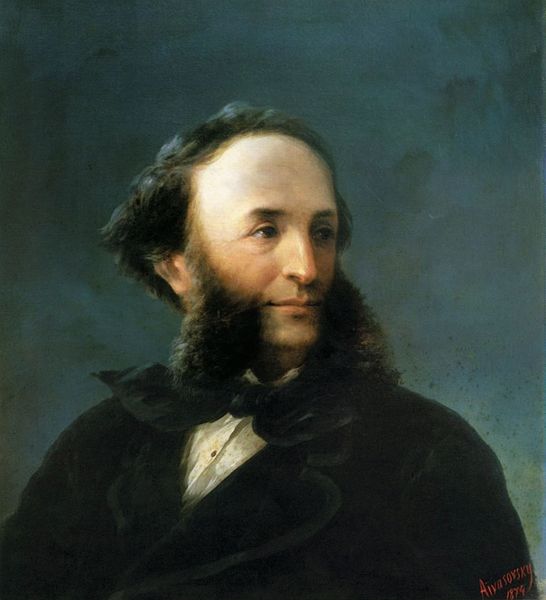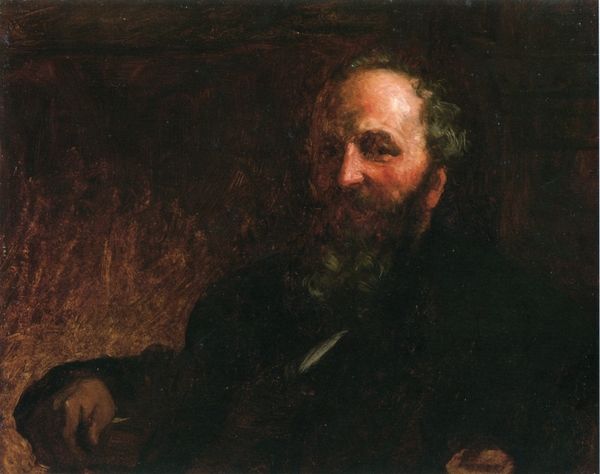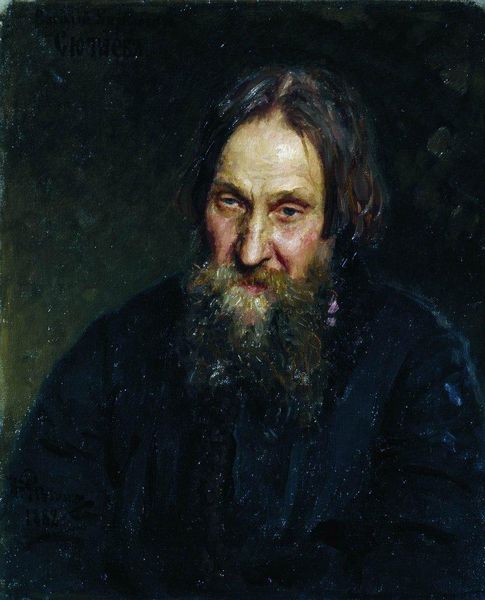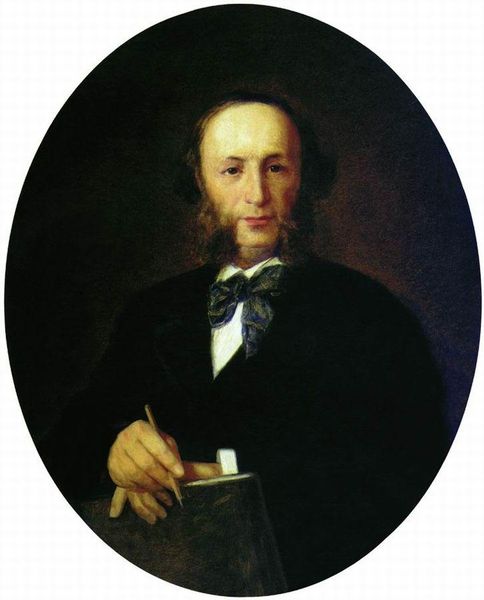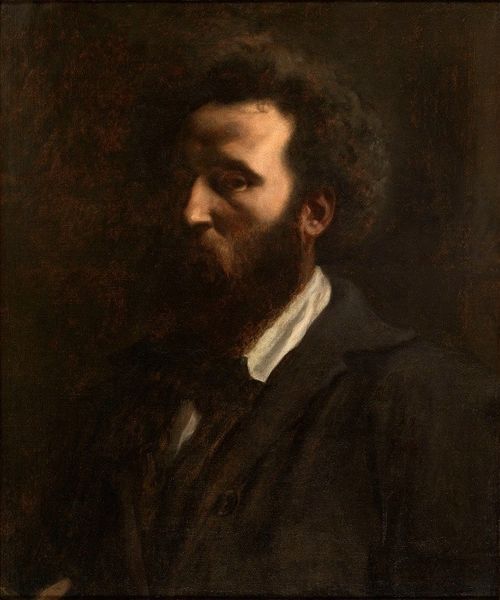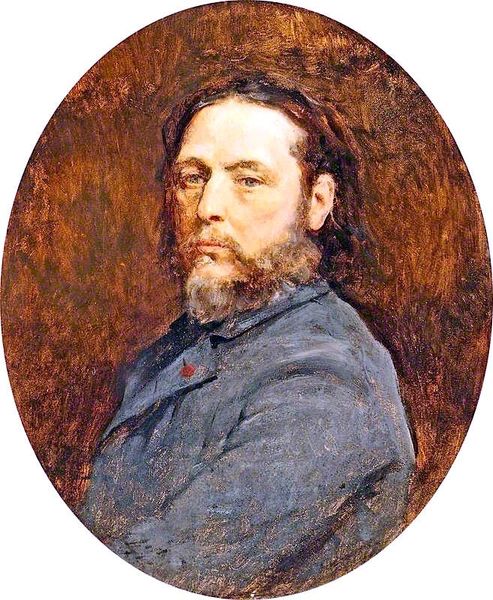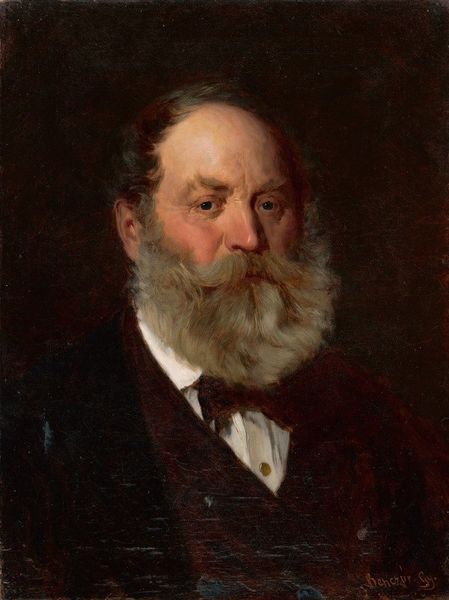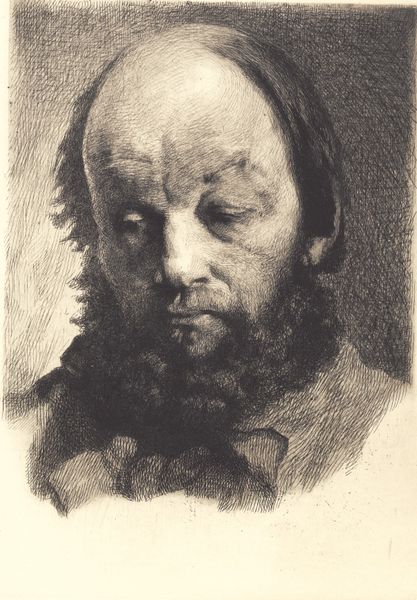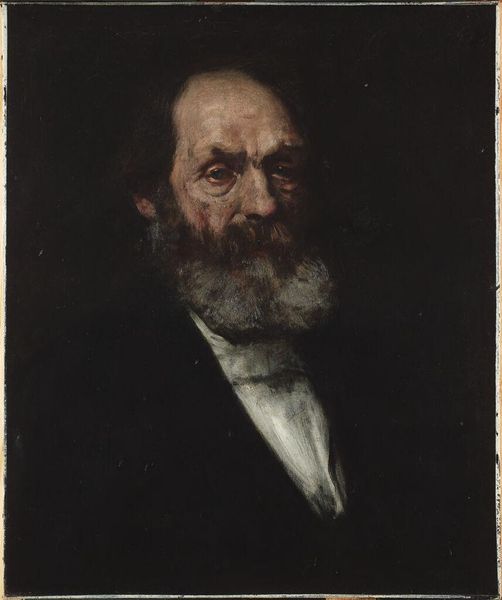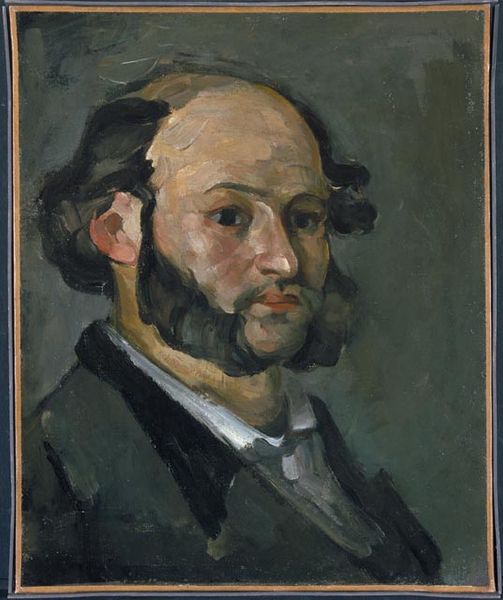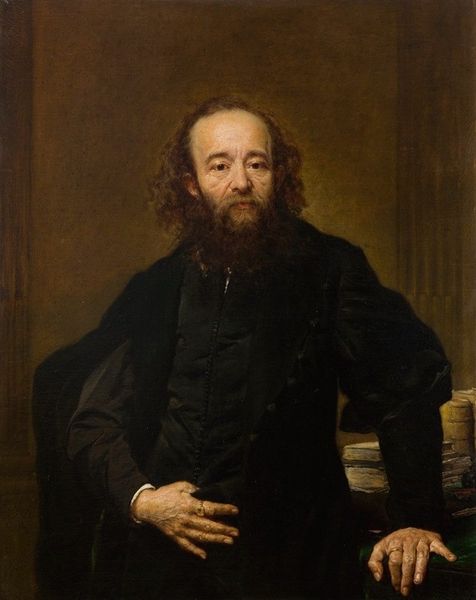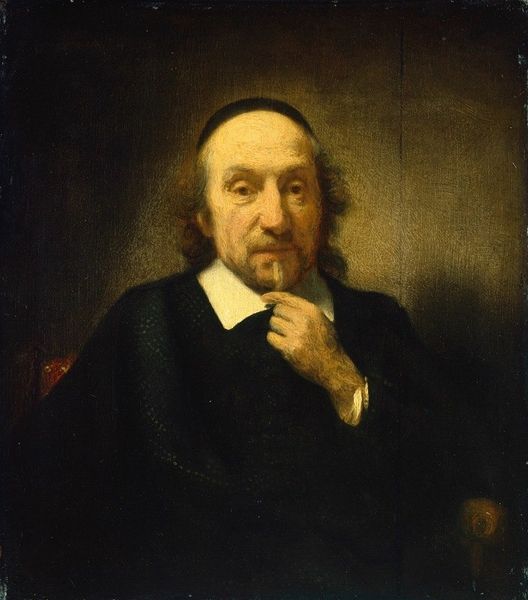
Copyright: Public domain
Editor: Here we have Konstantin Egorovich Makovsky’s "Portrait of the Artist Ivan Aivazovsky," created in 1887 using oil paints. The palette is quite dark, which makes me feel like it wants me to contemplate about the subject's legacy... What draws you in when you look at this painting? Curator: Legacy indeed, but also vulnerability. Notice the impasto, thick strokes creating the suggestion of form, especially around Aivazovsky's face and beard. It’s almost as if Makovsky is sculpting with light, hinting at the storms both internal and external that Aivazovsky, the master of marine paintings, captured so brilliantly. The direct gaze is compelling, isn't it? It’s an invitation to meet the man behind those breathtaking seascapes, beyond the public persona. It makes you wonder about the ocean of thoughts behind those eyes, right? Editor: I do wonder! It's a bit melancholic but... raw. Almost unfinished somehow. Did Makovsky usually leave so much brushwork visible? Curator: Not always, but I suspect here it's deliberate. Think about the Romanticism movement, the era's fascination with emotion, the sublime. Makovsky is not just rendering Aivazovsky; he's channeling him. Showing the tempestuousness of the artistic soul, in a sense. The blurred background could be seen as an impression of the world swirling around a singular artist... Editor: That's a great way to look at it. I initially thought it was just a stylistic choice, but it communicates so much more! Curator: Art is so good at deception; looks like 'this', but when looked at more thoroughly, becomes a vehicle. Seeing through our souls. Perhaps this portrait makes visible what normally swims unseen in those artists who so eloquently translate into art the visual world around us. Editor: Right. Thank you. This helped to look at the portrait beyond the mere depiction.
Comments
No comments
Be the first to comment and join the conversation on the ultimate creative platform.
